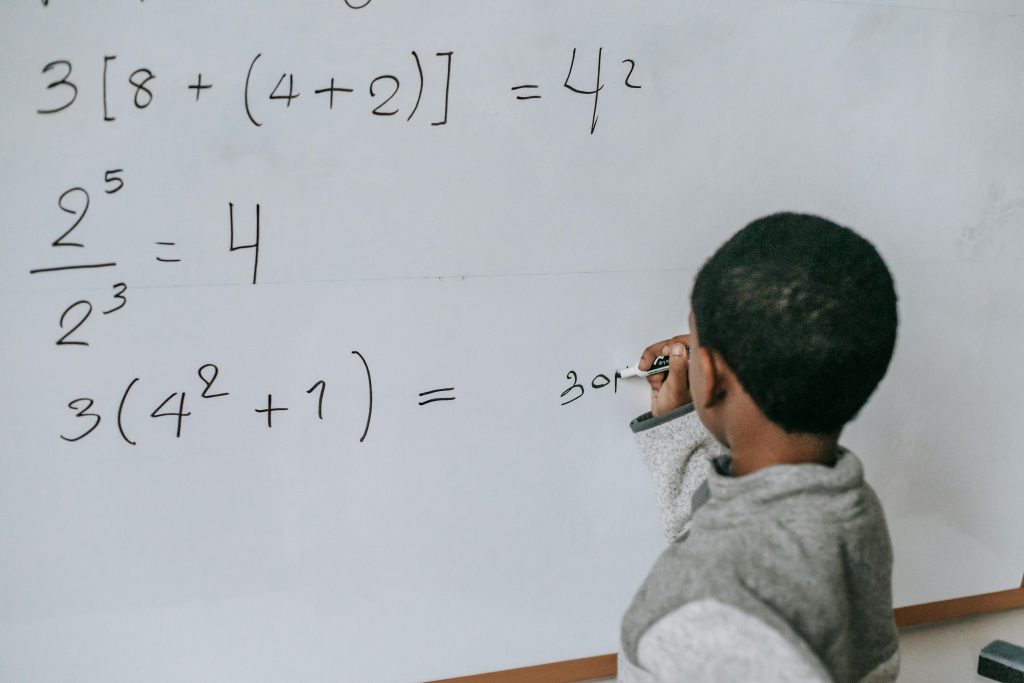Mathematics often feels intimidating to students, as many perceive it as a rigid subject filled with numbers, formulas, and abstract concepts. This perception makes it difficult for them to engage with math in a meaningful way. However, considering that math is woven into nearly every aspect of our lives, it should not feel so inaccessible.
Mathematics is a language—one that describes patterns, relationships, and the world around us. By teaching math as a human language, educators can make it more relatable, intuitive, and engaging. Rather than simply memorizing formulas without grasping their purpose, students can begin to see math as a powerful tool for communication, reasoning, and problem-solving.
“Kids do not understand math because we have been teaching it as dehumanized subject. But if we make Math human again, it will start to make sense again”
Randy Palisoc, an educator and advocate for rethinking math education.

Why Math Should Be Taught as a Language
Mathematics is often viewed as separate from other subjects, yet at its core, it functions just like a language. Much like English or Spanish, math has its own structure, symbols, and rules that convey meaning and allow us to interpret the world around us.
Many students struggle with math because they are taught to memorize formulas without truly understanding their logic. This approach is no different from learning a foreign language by memorizing vocabulary words without grasping sentence structure. Instead of treating math as a collection of rigid rules, we should teach it as a way of thinking, reasoning, and expressing ideas—a universal language that helps us make sense of patterns, relationships, and real-world phenomena.
By shifting this perspective, students begin to recognize that math is something they already use in their daily lives, rather than an intimidating or abstract subject. When we frame mathematics as a human language, it becomes more accessible, engaging, and intuitive. Let’s explore how this approach can bridge the gap between numbers and real-world understanding.
Fractions and Proportions: Learning from Everyday Experiences
Fractions and proportions are a common struggle for students, but they are concepts we use in daily life without even realizing it.
- Traditional Approach: Students are given problems like “Simplify 3/4 + 1/2.” Many memorize the steps mechanically but do not fully grasp the meaning.
- A More Intuitive Approach: Instead, we could frame this concept in a relatable way: “If a pizza is divided into four slices and you eat three, how much of the whole pizza have you eaten? What if you take another half of a pizza from a different plate?”
By linking fractions to real-life scenarios like cooking, shopping, or sharing food, students begin to see that fractions are not just symbols, they describe how we divide and compare things every day.
Algebra: Understanding It as a Puzzle, Not a Set of Rules
Algebra is often introduced as a series of formulas and manipulations, which can feel intimidating. However, at its core, algebra is about finding missing information—just like solving a puzzle.
- Traditional Approach: Students memorize formulas like
without understanding why they work.
- A More Intuitive Approach: Instead, present it as a game: “If I tell you that a number plus 3 equals 10, can you figure out what the number is? That’s algebra!”
When students realize that algebra is about relationships between numbers, rather than arbitrary rules, it becomes a much more engaging and approachable subject.
Exponents and Logarithms: The Language of Growth and Change
Exponential growth and logarithms often seem disconnected from everyday life, but they are all around us—in population growth, social media trends, and even the way diseases spread.
- Traditional Approach: Students are asked to calculate
or solve logarithmic equations without context.
- A More Intuitive Approach: Instead, relate it to real-world examples: “If a viral post doubles its views every hour, how long before it reaches a million views?”
By framing exponents as the language of rapid growth and logarithms as the tool for measuring how long something takes to grow, students see these concepts as meaningful and useful.
Making Math More Human
Mathematics is not just a set of abstract rules—it is a language that describes our world. When we teach math in a way that connects it to students’ experiences, we transform it from something intimidating into something relatable and even enjoyable.
Instead of presenting math as a subject to be memorized, we should encourage students to see it as a way to understand and interact with the world. When students realize that math is something they already use every day, they gain confidence, reduce anxiety, and develop a deeper appreciation for its beauty and logic.
